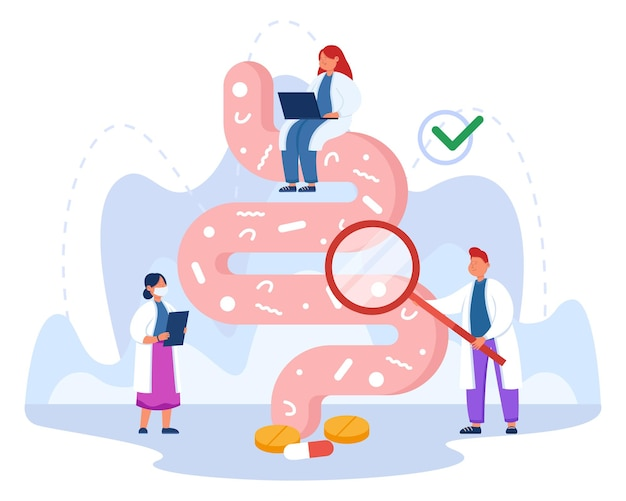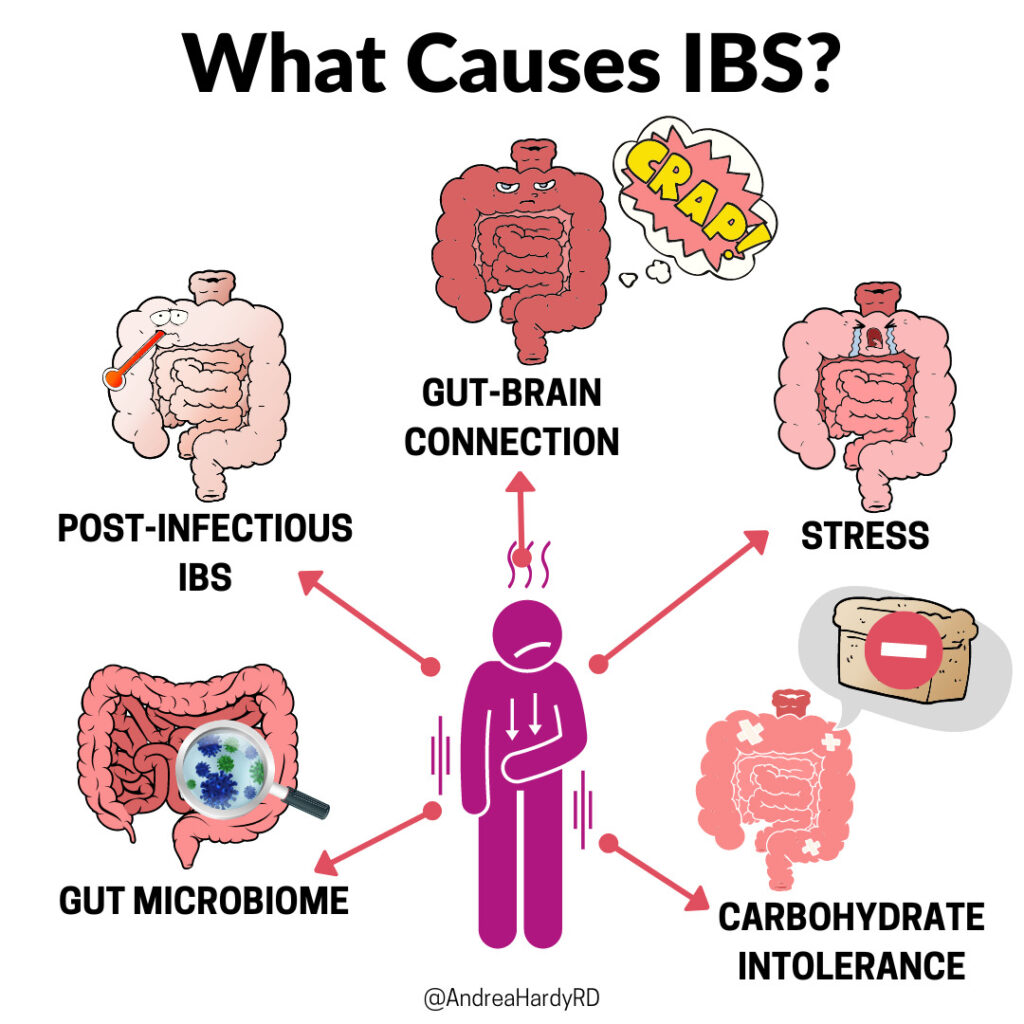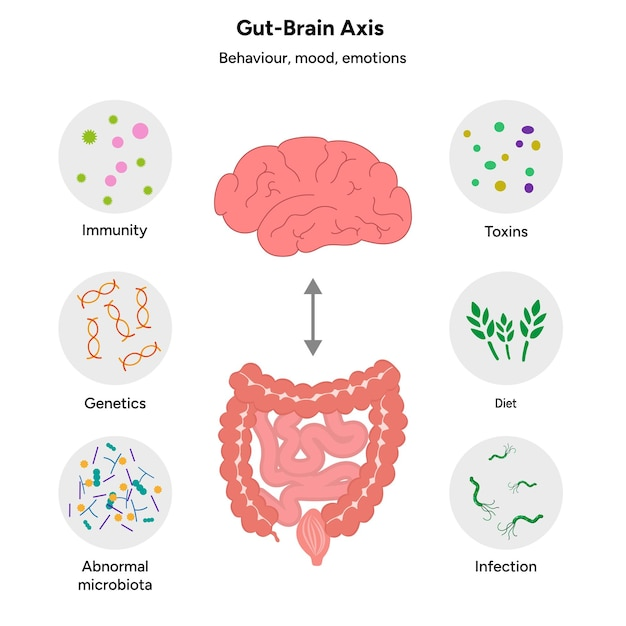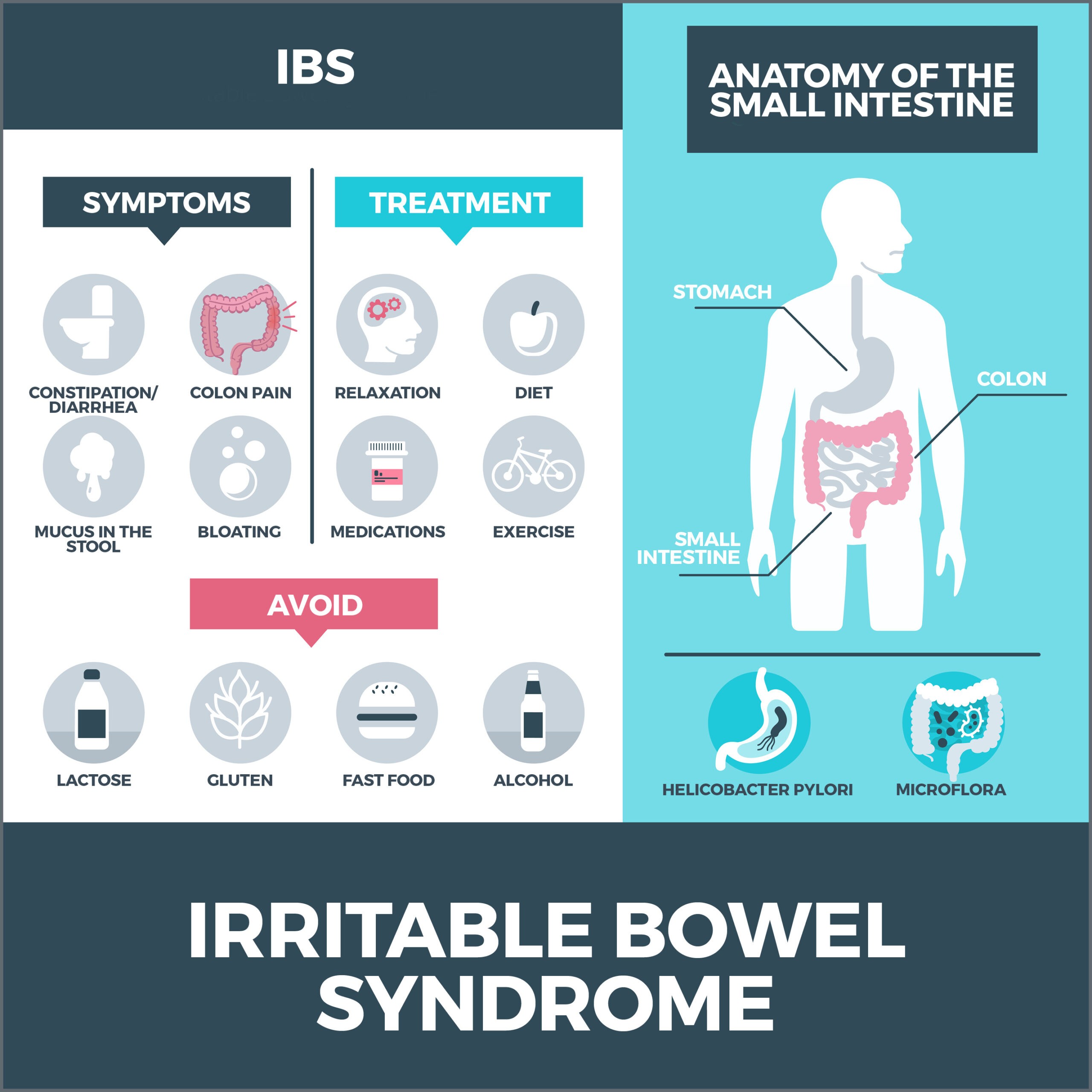


Irritable Bowel Syndrome (IBS) is a common gut disorder causing abdominal pain, bloating, diarrhea, and constipation.
💥 Triggers: Stress, certain foods, and irregular bowel habits.
✅ It’s chronic but manageable with proper diet and lifestyle.


We follow internationally accepted Rome IV criteriato diagnose IBS.

IBS has no permanent cure, but symptoms can be managed effectively with:
We individualize treatment plans depending on whether you have IBS-C, IBS-D, or IBS-M.
FODMAP = Fermentable Oligosaccharides, Disaccharides, Monosaccharides, and Polyols.
These are fermentable carbs that cause gas, bloating, pain in IBS.
3 Phases of the Diet:
❌ Apples, pears, watermelon, mango, cherries, plums
Bananas, berries, grapes, oranges
❌ Garlic, onions, cauliflower, broccoli, mushrooms
✅ Carrots, spinach, zucchini, bell peppers
❌ Whole wheat, rye, barley
✅ Rice, oats (limited), quinoa, gluten-free grains
❌ Kidney beans, lentils, chickpeas
✅ Rinsed canned lentils/beans, mung beans (small amounts)
❌ Milk, soft cheese, cream
Lactose-free milk, hard cheese, almond/soy milk
❌ Sorbitol, xylitol, sugar-free gums
✅ Honey, maple syrup (small amounts)
❌ Soda, beer, excess coffee
✅ Herbal teas (peppermint, ginger), water
Fruits: Bananas, berries, grapes, oranges
🥦 Vegetables: Carrots, zucchini, spinach, lettuce
🌾 Grains: Oats, rice, quinoa, gluten-free pasta
🥛 Dairy: Lactose-free milk, hard cheese, almond milk
🥩 Protein: Chicken, fish, tofu, eggs
Low-FODMAP diet + a food diary is key for symptom control.
May help with bloating and gut health.
Soluble fiber like psyllium is helpful in balanced doses.
sanghamitragastroenterology@gmail.com
KGH: Pentakota Complex, Maharanipeta
MVP: MIG-55, Sector 5, MVP Colony